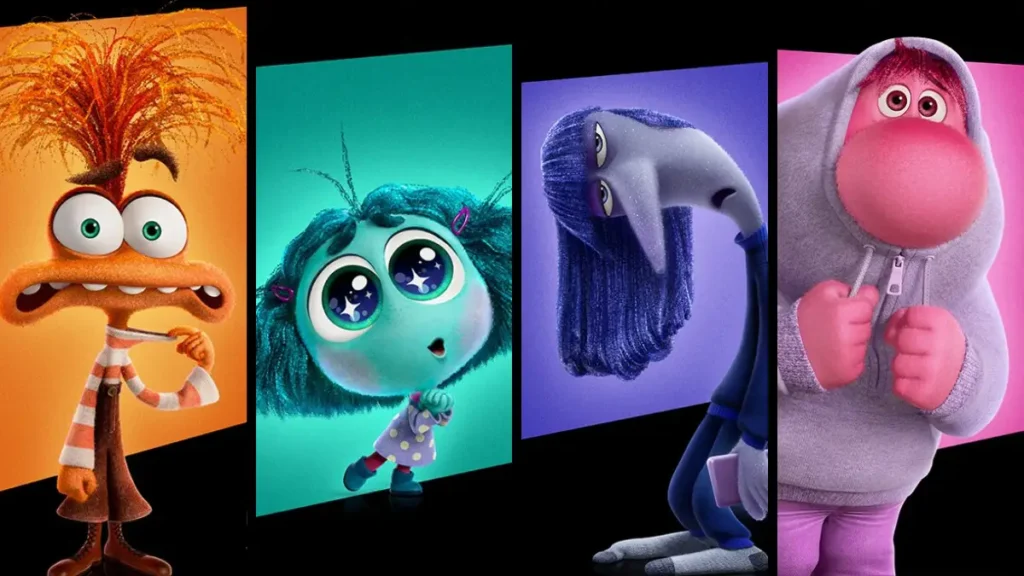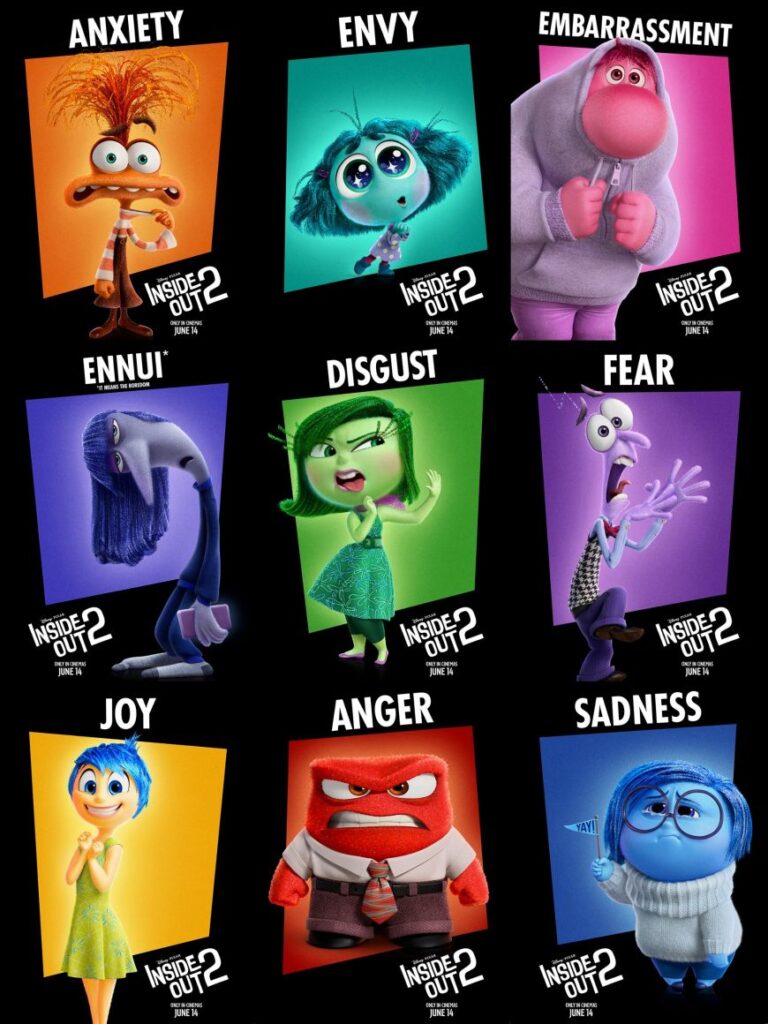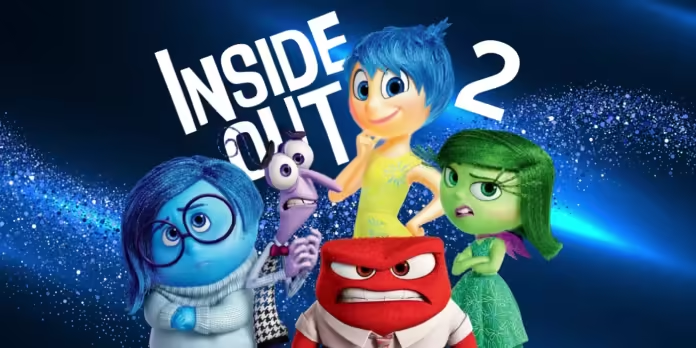Inside Out 2: A Profound and Heartwarming Dive into Emotional Complexity
Inside Out 2, Pixar’s highly anticipated sequel, continues to explore the rich emotional landscape introduced in its predecessor. While the central story focuses on Riley’s journey through puberty, a compelling subplot emerges, delivering a powerful punch that rivals the main storyline. Inside Out 2’s subplot, though underdeveloped, adds a fascinating dimension to the film’s narrative.
The Evolution of Emotional Balance
The original Inside Out (2015) left audiences with a profound message: emotional balance is crucial for experiencing life fully. Embracing emotions like sadness and anger is essential for personal growth. This theme is carried forward in Inside Out 2, directed by Kelsey Mann. Riley, now 13, is heading to a prestigious hockey camp, and new emotions, led by Anxiety (voiced by Maya Hawke), crash-land into her mind, adding new layers to her emotional journey.

Anxiety Takes the Lead
Anxiety’s arrival disrupts the established balance within Riley’s mind. Convinced that meticulous preparation is the key to success, Anxiety sidelines the other emotions, including Joy (Amy Poehler) and Sadness (Phyllis Smith). This narrative mirrors the realization Joy had in the first film—that she cannot dominate Riley’s emotional landscape and that Sadness is vital for emotional health. Anxiety’s arc leads to a similar epiphany: she needs to step back and allow the other emotions to guide Riley.
The Contradiction of Memory Suppression
A significant subplot emerges early in the movie when Joy reveals a device she created to banish bad memories to the back of Riley’s mind. This mechanism contradicts the lessons learned in the first film, where all memories were deemed essential for growth. Joy’s regression highlights a struggle with Riley’s evolving sense of self, suggesting that positive memories alone construct a “good person” persona. However, when Anxiety warps Riley’s self-perception, deeming her inadequate, Joy and the other emotions work to restore her confidence.
How did Maya Hawke relate to her characters anxiety in Inside Out? Find out
The Journey to Self-Acceptance
The subplot centers on accepting one’s flaws as part of being human. This idea, briefly touched upon, could have significantly enriched the narrative. Anxiety’s dominance forces Riley to confront her imperfections, but the film does not fully explore why it’s crucial to acknowledge and integrate negative memories. Joy’s sudden decision to embrace these memories lacks the buildup needed to make this subplot resonate as strongly as it could.

Embracing Complexity
As Anxiety’s influence wanes, Riley’s journey towards self-awareness and acceptance begins. Reclaiming the “bad” memories, Riley emerges as a more complex, self-aware individual. Joy and the other emotions come to appreciate her multifaceted nature, recognizing that insecurities and failings are integral to her character. This subplot’s potential lies in its affirmation that growing up involves understanding and accepting one’s flaws—a powerful message for both adults and younger viewers.
Conclusion
Inside Out 2 succeeds in extending the themes of its predecessor, but its most intriguing subplot deserves more space and development. The film underscores the importance of experiencing a full spectrum of emotions, yet it hints at a deeper understanding of personal growth and self-acceptance. This subplot, while not fully realized, provides a fascinating lens through which audiences can view Riley’s journey, making Inside Out 2 a thought-provoking continuation of Pixar’s exploration of the human psyche.
Inside Out 2 is currently in theaters, continuing to captivate audiences with its exploration of emotional complexity. While the central plot of emotional balance remains pivotal, the subplot of self-acceptance and the recognition of one’s flaws offers a compelling layer that, if given more attention, could have profoundly deepened the narrative.
FAQs
1. What is the main plot of Inside Out 2?
Answer: It follows Riley, now 13 years old, as she navigates the challenges of puberty. The familiar emotions from the first film, like Joy and Sadness, are joined by new ones, including Anxiety. The main plot revolves around maintaining emotional balance while dealing with the new and intense feelings that come with adolescence.
2. Who are the new emotions introduced in Inside Out 2?
Answer: Inside Out 2 introduces several new emotions, with Anxiety, voiced by Maya Hawke, being the most prominent. These new emotions crash-land into Riley’s mind as she begins to experience the complexities of puberty.
3. What is the significant subplot in Inside Out 2?
Answer: A compelling subplot is that it deals with Riley’s journey toward self-acceptance. It highlights the importance of acknowledging and integrating negative memories and emotions as part of understanding and accepting one’s flaws.
4. How does Anxiety affect Riley?
Answer: Anxiety takes over Riley’s mind, sidelining the other emotions. This causes Riley to doubt her abilities and self-worth, particularly in her skills and social interactions. The film explores how Anxiety’s dominance impacts Riley’s sense of self and emotional health.
5. What lesson does Joy learn in Inside Out 2?
Answer: Joy learns that it is crucial to embrace all of Riley’s memories, including the negative ones, to help Riley become a more complex and self-aware individual. This realization builds on the lesson from the first film that all emotions are necessary for a balanced and fulfilling life.
6. Is It suitable for young children?
Answer: Yes, Inside Out 2 is suitable for young children. However, some of the themes, such as dealing with anxiety and self-acceptance, may be more relatable and impactful for older children and teenagers.
7. How does Inside Out 2 differ from the first film?
Answer: While both films focus on the importance of emotional balance, Inside Out 2 delves deeper into the complexities of adolescence. The introduction of new emotions and the subplot of self-acceptance provide additional layers to Riley’s emotional journey.

